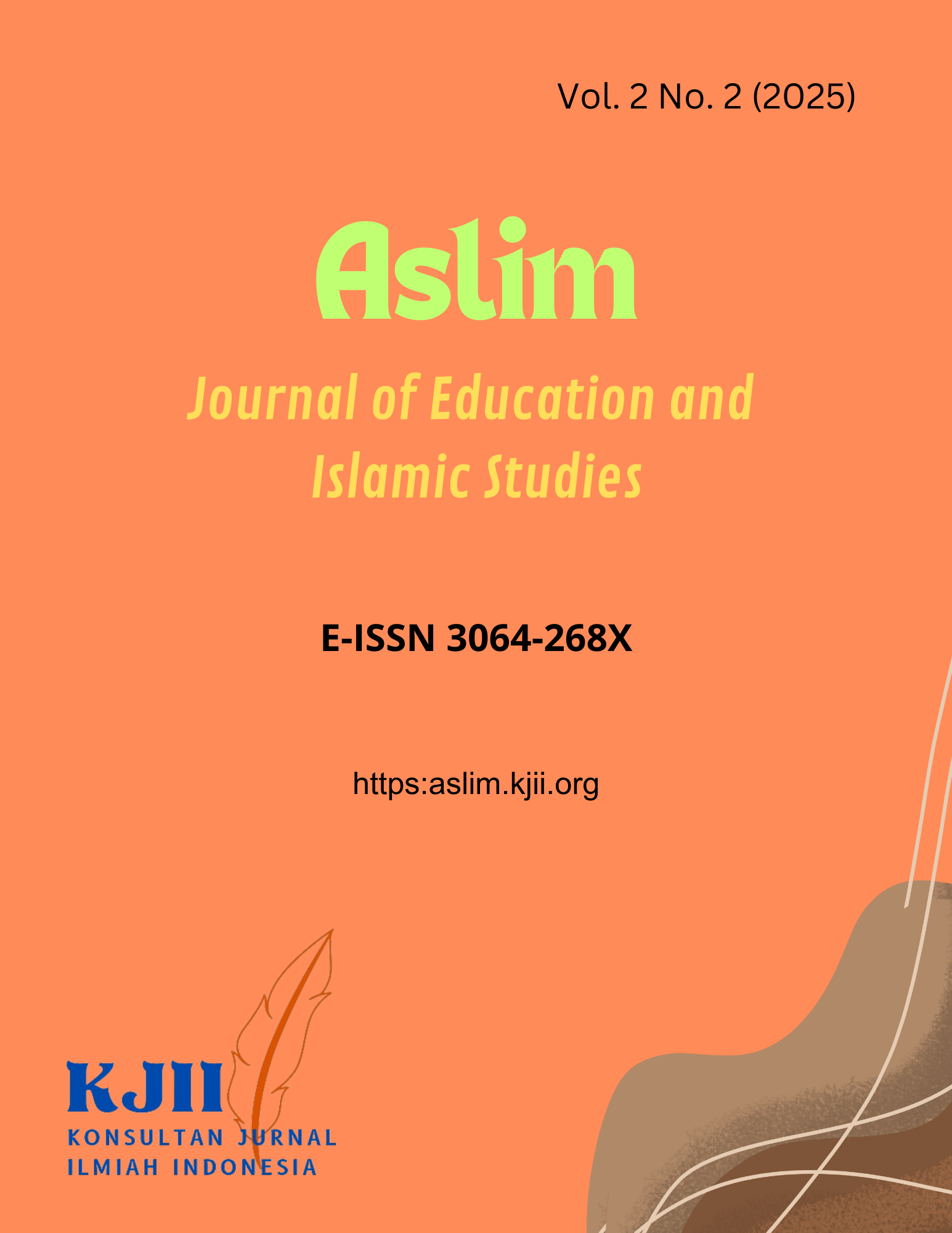Freedom of Religion from the Perspective of Hadith: A Normative and Contextual Analysis Study
DOI:
https://doi.org/10.63738/aslim.v2i2.38Keywords:
Religious Freedom, Prophetic Traditions, Normative Approach, Contextual Approach, ToleranceAbstract
Freedom of religion is one of the basic principles upheld in various modern legal and thought systems, including in the discourse of human rights. In Islam, the issue of religious freedom is often debated, especially regarding how the Qur'an and the Prophet Muhammad's hadith explain and apply it. This research aims to examine the concept of religious freedom in the perspective of the Prophet's hadith by using normative and contextual approaches. This research is a qualitative study based on library research with thematic analysis method of relevant hadiths. The normative approach is used to examine the values, norms, and teachings of Islamic law contained in the hadith text. Meanwhile, the contextual approach is used to understand the social, political, and cultural background when the hadith was delivered, so that the meaning of the hadith can be interpreted as a whole and not separated from its historical reality. The results show that the Prophet Muhammad upheld the principle of religious freedom through his speech and social practices, including in the Medina Charter and interactions with non-Muslim communities. Hadiths that support the principles of tolerance, protection of non-Muslims, and prohibition of religious coercion show that Islam substantially upholds religious freedom. This study concludes that through a normative and contextual understanding of hadith, Islam can be understood as a religion that is true to itself.
References
Bashori, Achmad Imam. “Pergeseran Tafsir Tahliliy Menuju Tafsir ‘Ijmaliy.” Kaca (Karunia Cahaya Allah): Jurnal Dialogis Ilmu Ushuluddin 9, no. 1 (2019): 105–22. https://doi.org/10.36781/kaca.v9i1.3007.
Dewi Murni. “Toleransi Dan Kebebasan Beragama Dalam Perspektif Al-Quran.” Jurnal Syahadah 6, no. 2 (2018): 72–90.
Dr. Aulia Rosa Nasution, SH. M.Hum. “Kebebasan Beragama Dalam Tinjauan Hak Asasi Manusia.” Jurnal Hukum Responsif FH UNPAB 6, no. 6 (2018): 1–26.
Hakim, Lukmanul. “Kebebasan Beragama Dalam Perspektif Islam,” 2017.
Izatie, Noor, Che Zawawi, Zul Yaakob, Nur Farhana, and Abdul Rahman. “Strategi-Strategi Psikologi Merekrut Pemikiran Muslim in the Dabiq )” 6, no. 3 (2018): 111–16.
Misrah. “Kebebasan Beragama Dalam Perspektif Hadits.” Jurnal :Miqot Vol.34, no. No.2 (2010): 178.
Muhammad Firdaus, and Misnawati. “Konsep Kebebasan Beragama Dalam Islam: Analisis Pandangan Tāhir Ibn `Āsyūr.” Empirisma: Jurnal Pemikiran Dan Kebudayaan Islam 33, no. 1 (2024): 61–86. https://doi.org/10.30762/empirisma.v33i1.2021.
Musif, Ach. “Pemikiran Islam Kontemporer Abdullah Saeed Dan Implementasinya Dalam Persoalan Murtad.” Ulumuna 19, no. 1 (2015): 79–92. https://doi.org/10.20414/ujis.v19i1.1251.
Ramsay, Mike, John Hurley, and Gavin R. Neilson. “Workplace Learning for Nurses.” Self-Determined Learning: Heutagogy in Action 2 (2013): 85–98. https://doi.org/10.5040/9781472553232.ch-007.
Wardani, Galuh Retno Setyo, Khoirul Hidayah, and Suwandi. “Hak Asasi Manusia Dan Statement Kebebasan Beragama Dalam Al-Qur’an ( Kajian Tafsir Surat Al-Baqarah Ayat 256 ).” Jurnal Studi Al-Qur’an Dan Tafsir 5, no. 1 (2021): 159.
Zakiyyah, Annisa Azizah. “Hadits-Hadits Tentang Toleransi Beragama Dalam Pemahaman Dan Pengamalan Siswa Smk Texar Karawang.” Jurnal Penelitian Ilmu Ushuluddin 2, no. 3 (2022): 615–29. https://doi.org/10.15575/jpiu.15496.





